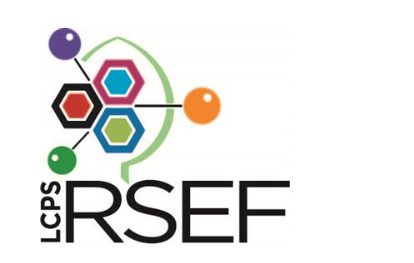Champe Student’s RSEF Experiment Sheds Light on Climate Change

By: Apal Upadhyaya
For the first time in Champe history, two students won first place at the LCPS Regional Science and Engineering Fair (RSEF). One of these students’ experiments shed light on climate change’s impact on marine life.
Seniors Harini Ganabady and Neha Jagasia won first place at RSEF after creating, testing, and presenting their experiment’s findings to judges. RSEF this year was hosted virtually from March 16-17th, 2022. Finals judging, however, was held in person at Rock Ridge High School on Thursday, March 17th. According to the RSEF website, over 300 students from Loudoun County’s 15 high schools participated in the fair. Experiments included a wide variety of topics, from Animal Sciences to Astronomy.

“The purpose of our fair is to stimulate student interest in science, technology, engineering, and mathematics (STEM),” LCPS Regional Science & Engineering Fair stated on their website, “to encourage students to engage in research in STEM fields, to provide students opportunities to present research to STEM professionals and the community, and to give public recognition to students for their work.”
Ganabady’s experiment, titled The Effect of Cholecalciferol on the Calcium Absorption and Resistance to pH Changes in Protothaca taminea explored the effects of increased CO2, or carbon dioxide, emissions have on marine life and their habitats. She explored the impacts that increased carbon dioxide could have on marine ecosystems through ocean acidification. According to Ganabady’s abstract, ocean acidification is when excess carbon dioxide is absorbed from the atmosphere into the oceans, rendering catastrophic effects on its pH, how acidic or basic a substance is, which directly harms any marine life living in those waters. Some species can develop adaptations to slow down the effects an increasingly acidic ocean can have on their bodies. In addition, vitamin D can help these species absorb excess calcium in the water that forms when carbonic acid dissociates.

“Climate change causes an excess of carbon dioxide in the atmosphere, which causes carbonic acid to form in bodies of water. Carbonic acid is a weak acid that dissociates into hydrogen ions and carbonate ions in the water,” Ganabady said when asked about her experiment. “When the carbonic acid dissociates, the carbonate ion from the calcium carbonate component and the hydrogen ion from the carbonic acid component bind together. This leaves a lower amount of calcium carbonate in the water for animals to use. However, there is a lot of calcium still left in the water. The problem is that these organisms are unable to metabolize just the calcium. This is why I wanted to see if I can somehow be able to allow these clams to also metabolize the calcium through vitamin D because it increases calcium absorption.”
She utilized little neck clams to test if adding vitamin D into the water helps marine organisms to absorb increased amounts of calcium to resist changes in pH of the water. She found that while vitamin D itself did help strengthen the clams’ shells, increased amounts of just calcium was much more impactful in creasing shell strength. Though the results were not what she expected, she believes that climate change and future research by students like her is the best way to find solutions for animals facing a changing planet as a result of human activity.

“One day, my family and I were driving to Shenandoah National Park, and we saw a truck that was releasing a lot of smoke into the air. I started the conversation about how global warming was getting worse by the day, and there weren’t a lot of solutions to fix the issue,” Ganabady said. “There was a lot of research about what ocean acidification did to these innocent creatures, but there wasn’t a lot of information that mentioned how we can relieve some effects of ocean acidification on these animals. Ever since I was little, I’ve wanted to make the world a better place through my research. So, I wanted to help these organisms combat this huge problem and save them from possible extinction with this ISR [Independent Student Research] project.”
Independent Student Research (ISR) is a dual enrollment program offered through George Mason University that allows students to pursue studies through individual projects and research. The class is offered for rising juniors and seniors. It was through this program that Ganabady conducted this experiment that landed her at first place in the Earth and Environmental Science category at RSEF.
“If one wants to pursue research, then they should definitely do it on something they are passionate about. Research takes time and dedication, so choosing a topic that one is passionate about will make sure that they don’t give up and continue to work through all the obstacles,” Ganabady said. “Your research is important no matter what, so don’t give up on the time and effort you put into it.”


























